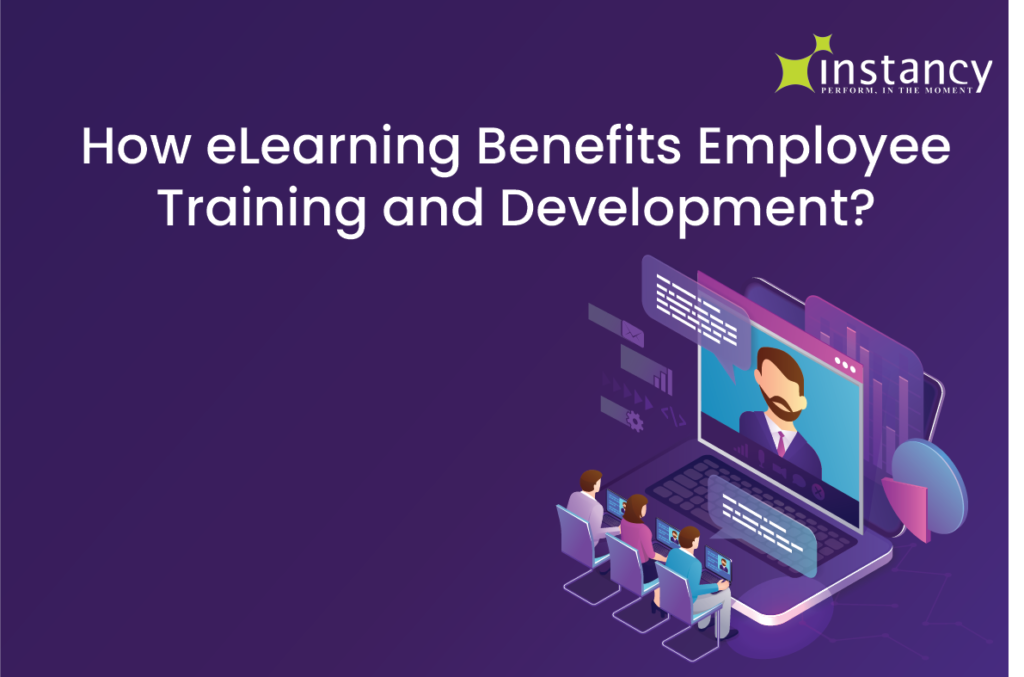Employee training is becoming more vital and constant in today’s dynamic business environment. According to Axonify, 93% of employees said that well-planned employee training programs positively affect their level of engagement.
There is no doubt that the amount of training pushed into the workplace is increasing, from new workplace software, tools, and technology to compliance training and unique requirements. Let us first dive into the basics to understand what employee training entails.
eLearning can be used for various technical and non-technical skills and knowledge areas. Technical skills may include software systems training and hardware operations. Soft skills may include communication, creativity, leadership, sales, etc. eLearning is applicable for both conceptual understanding and practical job-task performance.
Furthermore, eLearning has demonstrated value at levels in an organization, ranging from top executives and managers to front or field-level workers.
What is Employee Training?
Employee training is a program that equips employees with specialized knowledge and skills to help them perform better in their existing positions. While most businesses recognize the value of initial job training and onboarding new employees, many fail to invest in ongoing training and development, paying a hefty price for lost talent, productivity, and revenues. The key is to maintain consistency so that your personnel is well trained to keep up with the ongoing cutting-edge competition in the market.
Employee training and development that is of high-quality assists businesses to retain top talent while increasing earnings. Competition for elite talent is fiercer than ever in this tight labor market. It takes effort and money to find good staff. Retention and growth are strongly influenced by how you train, develop, and engage that talent. It’s not just about retention, though. Effective personnel development and training also leads to a healthier overall bottom line.
The Ever-Widening Skills Gap

The term “skills gap” refers to the disparity between the abilities that firms require from their employees and workers’ skills. It’s spurred by several variables, including advancements in automation, artificial intelligence, and other technologies and individuals lacking the skills needed to interact with these new technological improvements.
These developments have altered day-to-day operations, and many firms’ upskilling programs have yet to catch up. As a result, the skills gap is increasing, which can negatively impact company performance and employee confidence and productivity. According to McKinsey & Company, 87 percent of organizations fully recognize the need to bridge their organizations’ skills gaps.
Employers must find creative methods and new technology innovations to implement workforce education programs. This is where Employee Training and Development assume center stage.
Benefits of eLearning for Employee Training
In comparison to instructor-led training, eLearning saves your firm money and accomplishes a lot more. These are the key benefits of eLearning for your employees and firm:
- Convenient and Adaptable
One of the most significant features of eLearning in the corporate training setting is the flexibility it renders to the learners. They can access classes anytime, from any location, and on any device, including laptops, tablets, desktops, and even mobiles.
This implies that employees can learn on their way to work, during lunch break, or relaxing on a comfortable couch. It also implies that not everyone must be taught at the same time. As everyone has a hectic schedule, employees can access the training modules when they have spare time. This will also enable them to retain the material for a longer duration.
- Personalized Skill Development
There are times when you want the entire workplace to acquire a particular skill set. However, each employee has a specific job role and has to grow in their respective niche. eLearning is appropriate as it allows the instructor to customize the learning experience and discover lessons that meet each user’s specific needs. Employees can work upon acquiring a range of skills or work on their weak areas.
Executives can reap the same benefits as their employees from eLearning. Taking classes might benefit in understanding how to engage staff and develop leadership skills.
- Increased Employee Retention
According to Harvard Business Review research, a lack of professional advancement options is a primary cause of work dissatisfaction and early retirement. Employees are more willing to invest back in the firm with improved loyalty, engagement, and productivity if they believe that organizations invest in their futures rather than just their current work positions. Furthermore, people enjoy feeling important and capable. Employees who feel important to an organization and are well trained to accomplish their duties have higher work satisfaction, which leads to lower absence and turnover rates. According to the LinkedIn Learning Report, 94% of employees say they would stay at a company longer if it invested in their learning and development.
- Cost-Effective
For a more extensive corporate base, eLearning is inherently more cost-effective. Fees for trainers and employee time are minimized, and so are costs for training facilities, travel, catering, and materials as eLearning courses can be reused with ease. On the other hand, employees who use eLearning will only need a desktop or a mobile phone and some time to accomplish their training. It’s a long-term investment that will save you money.
Since eLearning courses can be reused and updated with little cost or time, a single online training program can reach significantly more people in a shorter amount of time than a traditional session.

Engaging Learning
Sending your employees large handbooks or manuals is unlikely to result in meaningful and desirable knowledge and skill transfer. Some of the resources that can aid in employee training are :
- Microlearning
- Gamification
- Simulation
- Podcasts
- Video-Based Learning
- Interactive and video-based tutorials
These techniques can be combined with one another to increase interaction and retention. Your employees will be better prepared for a fast-changing work environment by acquiring the most appropriate training for a dynamic environment.
Helps in Simulation
eLearning can be helpful for technical and soft-skill training.
Simulation is a very effective form of eLearning.
For example, you can use simulations to make the learning much more interactive than a page-turning manual or handbook:
- Role-play simulations to train employees in customer service or interviewing skills
- Software application simulations to train employees on new software applications
- Hardware simulations to train employees on how to repair equipment
Ease of Tracking Learner Progress Data and Measuring Results
Every organization wants a training program that is effective and aids in the growth of its employees. However, in traditional training, one needs to maintain a huge amount of data that can often get misplaced and become a hassle to update.
When you conduct training online, it’s simpler to collect the data you need to assess its efficiency. Course completion rates, forum involvement, assessment grades, and the time it takes to complete a course can all be acquired directly from the Learning Management System in reports (LMS). Employees register directly on the LMS with online training, and the rest is a breeze. There are no pens, papers, or ring-back folders. Admin personnel can run reports to see which employees have begun or completed training and who still need a little nudge.
Creating Opportunities for Employee Development
So, how do you go about providing your staff with eLearning opportunities? Consider your requirements first. Is it necessary for your employees to improve their communication skills? Is there anything that the entire office needs to upskill?
Then consider what each employee would require or desire. It’s usually preferable to portray development sponsorship as a benefit rather than a requirement—you don’t want disgruntled people to learn. Experiment a little—you could attempt some self-directed classes or check what learning methods your employees like. It’s critical to invest in employee development regularly—it just might take some time to figure out which eLearning options are the most effective.
Conclusion
With eLearning, provide your employees with high-quality, world-class, standardized training. They have the freedom to learn when and where they want, at their own pace. Deliver new content instantaneously, and they will have more opportunities to interact with it, all while lowering the cost, time, and overall stress of training.
With Instancy, you can equip your teams with the information and skill-building tools they need and the individualized training they need to boost their productivity and contribution to your company.
So, what are you waiting for?





